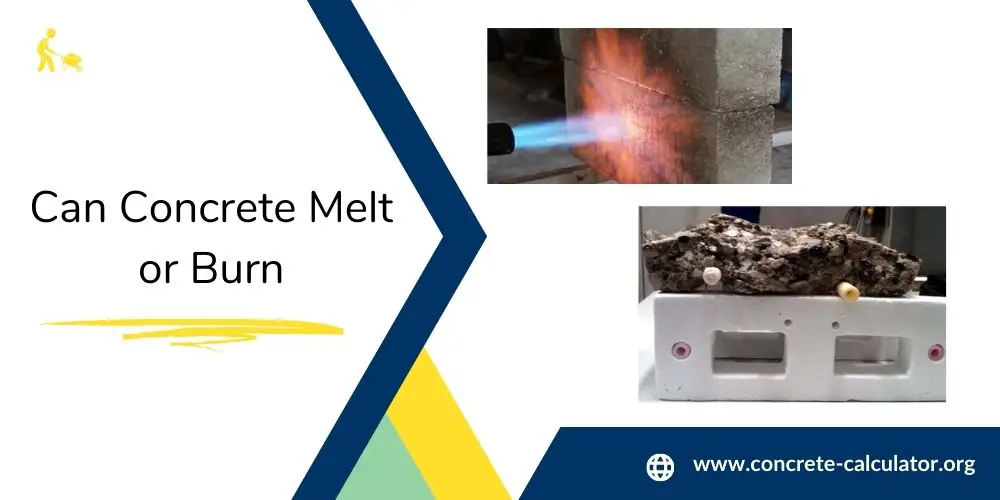Concrete is one of the most common building materials in the world. It is highly durable and can last for decades if not centuries. However, there is a question that people have been asking: can concrete melt or burn? The answer is not straightforward, as it depends on several factors.
Concrete does not melt in the traditional sense, but it can be softened by extreme temperatures. At temperatures higher than 1000 °C, concrete can soften and eventually start to deform. However, it will not melt completely. Let’s dive into the details.

Concrete Melting, Does It Happen?
We need to define what we mean by the term “melt”. When most people think of melting, they think of a solid material turning into a liquid. In this sense, then no, concrete cannot melt. However, concrete can be heated to very high temperatures that can cause it to crack, spall, or even explode.
This is because concrete has a low thermal conductivity, which means that it does not conduct heat very well. When heat is applied to concrete, it can cause the trapped moisture inside to expand rapidly, leading to the aforementioned effects.
People Also Use: Concrete Calculator
Then, we need to consider whether the concrete can burn. Again, the answer is not straightforward. Technically speaking, concrete does not burn, as it is not a flammable material. However, when exposed to high temperatures, such as those generated in a fire, the cement in concrete can begin to decompose and release water vapor.
This process is known as “calcination”. As the water vapor is released, it can create pressure inside the concrete, causing it to crack or split. Therefore, concrete may not burn like wood or paper, but it can still be heavily damaged by fire.
Concrete Melting Examples
We need to look at some examples of concrete being exposed to extreme heat. One such example is the World Trade Center towers in New York, which collapsed after being hit by airplanes that were on fire, many people asked can concrete catch on fire? The intense heat caused by the jet fuel ignited the office contents, which in turn ignited the building’s structural elements, including the concrete.
The high temperatures caused the steel beams to melt and the concrete to spill, leading to the building’s collapse. Another example is the Hoover Dam, which was built to withstand high temperatures. The dam’s concrete was made with special admixtures to help it resist the extreme heat produced by the sun in the desert environment.
Read Also: How to Sand Concrete
Preventions For Concrete Melting
We can highlight some steps that can be taken to protect concrete from high temperatures. Some of these include adding special admixtures to the concrete mix, such as fly ash, slag, or silica fume, which can help it resist high temperatures.
Building insulation can also help prevent heat from reaching the concrete. Additionally, fireproof coatings can be applied to the surface of the concrete to protect it from flames and high temperatures.
Also Check: Can Concrete Get Mold
FAQ’s
How can concrete be protected from melting in extreme heat?
Adding special admixtures to the concrete mix, such as fly ash, slag, or silica fume, can help it resist high temperatures. Building insulation and fireproof coatings can also be applied to the surface of the concrete to protect it from flames and high temperatures.
What caused the World Trade Center towers to collapse?
The intense heat caused by the jet fuel ignited the office contents, which in turn ignited the building’s structural elements, including the concrete. The high temperatures caused the steel beams to melt and the concrete to spill, leading to the building’s collapse.

